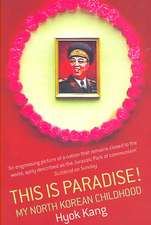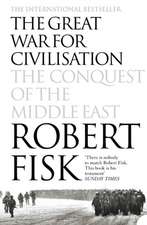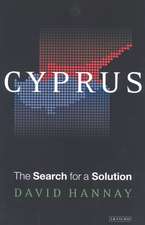The Archaeology of Seafaring in Ancient South Asia: Cambridge World Archaeology
Autor Himanshu Prabha Rayen Limba Engleză Paperback – 13 aug 2003
| Toate formatele și edițiile | Preț | Express |
|---|---|---|
| Paperback (1) | 454.38 lei 43-57 zile | |
| Cambridge University Press – 13 aug 2003 | 454.38 lei 43-57 zile | |
| Hardback (1) | 724.90 lei 43-57 zile | |
| Cambridge University Press – 13 aug 2003 | 724.90 lei 43-57 zile |
Din seria Cambridge World Archaeology
-
 Preț: 202.34 lei
Preț: 202.34 lei -
 Preț: 234.23 lei
Preț: 234.23 lei -
 Preț: 181.13 lei
Preț: 181.13 lei -
 Preț: 236.08 lei
Preț: 236.08 lei -
 Preț: 234.60 lei
Preț: 234.60 lei -
 Preț: 236.42 lei
Preț: 236.42 lei -
 Preț: 281.39 lei
Preț: 281.39 lei - 9%
 Preț: 589.94 lei
Preț: 589.94 lei - 14%
 Preț: 754.53 lei
Preț: 754.53 lei -
 Preț: 286.40 lei
Preț: 286.40 lei -
 Preț: 355.36 lei
Preț: 355.36 lei - 11%
 Preț: 553.39 lei
Preț: 553.39 lei - 11%
 Preț: 548.61 lei
Preț: 548.61 lei -
 Preț: 324.00 lei
Preț: 324.00 lei -
 Preț: 381.45 lei
Preț: 381.45 lei -
 Preț: 247.67 lei
Preț: 247.67 lei -
 Preț: 289.30 lei
Preț: 289.30 lei -
 Preț: 351.50 lei
Preț: 351.50 lei -
 Preț: 282.54 lei
Preț: 282.54 lei - 8%
 Preț: 389.26 lei
Preț: 389.26 lei -
 Preț: 378.04 lei
Preț: 378.04 lei -
 Preț: 468.54 lei
Preț: 468.54 lei -
 Preț: 320.13 lei
Preț: 320.13 lei - 14%
 Preț: 719.47 lei
Preț: 719.47 lei -
 Preț: 420.02 lei
Preț: 420.02 lei - 11%
 Preț: 464.85 lei
Preț: 464.85 lei - 14%
 Preț: 773.24 lei
Preț: 773.24 lei - 11%
 Preț: 488.03 lei
Preț: 488.03 lei -
 Preț: 467.68 lei
Preț: 467.68 lei -
 Preț: 354.89 lei
Preț: 354.89 lei - 11%
 Preț: 706.20 lei
Preț: 706.20 lei - 14%
 Preț: 916.83 lei
Preț: 916.83 lei - 11%
 Preț: 523.70 lei
Preț: 523.70 lei -
 Preț: 461.01 lei
Preț: 461.01 lei - 11%
 Preț: 645.61 lei
Preț: 645.61 lei
Preț: 454.38 lei
Preț vechi: 510.54 lei
-11% Nou
Puncte Express: 682
Preț estimativ în valută:
86.97€ • 94.50$ • 73.10£
86.97€ • 94.50$ • 73.10£
Carte tipărită la comandă
Livrare economică 21 aprilie-05 mai
Preluare comenzi: 021 569.72.76
Specificații
ISBN-13: 9780521011099
ISBN-10: 0521011094
Pagini: 350
Ilustrații: 14 b/w illus. 4 colour illus. 22 maps 5 tables
Dimensiuni: 173 x 244 x 23 mm
Greutate: 0.68 kg
Editura: Cambridge University Press
Colecția Cambridge University Press
Seria Cambridge World Archaeology
Locul publicării:New York, United States
ISBN-10: 0521011094
Pagini: 350
Ilustrații: 14 b/w illus. 4 colour illus. 22 maps 5 tables
Dimensiuni: 173 x 244 x 23 mm
Greutate: 0.68 kg
Editura: Cambridge University Press
Colecția Cambridge University Press
Seria Cambridge World Archaeology
Locul publicării:New York, United States
Cuprins
Part I. Historiography and the Maritime Landscape: 1. The perspective; 2. Historiography; 3. The maritime landscape; 4. Geographical knowledge of the Indian Ocean in antiquity: Part II. Fishing and Sailing Communities: Cross-Cultural Contacts; 5. Marine and coastal resources; 6. Maritime communities; 7. Boat nomads; 8. Piracy; 9. Fishing communities: the historical record; 10. Sailing communities: Part III. La Longue Durée: Transportation; Boat-Building Technology and Navigation: 11. Archaeology of the boat; 12. The stitched tradition; 13. Early European response; 14. The ethnographic evidence; 15. Boat-building centres; 16. Traditional navigation; 17. Ownership of vessels; 18. Organisation of shipping; 19. Organisation of shipping; 20. Innovation and change; 21. Repair and maintenance; 22. Chronology of disjunction: Part IV. Maritime Trade Networks: The Beginnings (third-second millenia BCE); 23. Mesopotamian contacts; 24. The Persian Gulf and early maritime networks; 25. The Harappan civilization; 26. The maritime regions of the Harappans; 27. Networks of trade: internal; 28. Transition and change: Part V. Regional Integration: (late second - first millennium BCE); 29. The Persian Gulf; 30. Socotra; 31. Peninsular India; 32. Sri Lanka; 33. Southeast Asia: Part VI. Consolidation of Political Structure: 34. The setting; 35. Political concepts in early Buddhism: theory and practice; 36. Satavahanas and their successors; 37. Alliance as political strategy; 38. The early policies in Sri Lanka; 39. Political developments in early Southeast Asia; 40. Royalty and ritual: Part VII. The Greeks: Adventurers, Traders and Travellers; 41. The explorers; 42. Hellenistic settlements; 43. The Nabataeans, Sabeans and Gerrhaeans; 44. The maritime network; 45. Christian communities: Part VIII. Merchant Lineage and the Guild; 46. Merchant communities and interaction with the state; 47. Organisation of inland trade; 48. The Indian Ocean network; 49. Foreigners and trade networks; 50. Money and the use of coins: Part IX. Multiple Meanings: Craft Production and Trade Networks: 51. The trading commodities; 52. The textiles; 53. Beads; 54. Ivory; 55. Metal artefacts; 56. Organisation of crafts: Part X Shared Faith: 57. Social base of early Buddhism; 58. The worship of the Stupa and the Relics; 59. Pilgrimage; 60. Ritual and ceremony; 61. Buddhism and maritime activity; 62. Archaeology of monastic sites; 63. Continuity and change: Part XI. Retrospect and Prospect: 64. In conclusion; 65. Future research strategy.
Recenzii
"Finally, maritime historians will rejoice that we now have our first sea-focussed discussion of the early history of South Asia." International Journal of Maritime History
Notă biografică
Descriere
This is an archaeological study of the Indian subcontinent's ancient maritime history, before European expansion.















